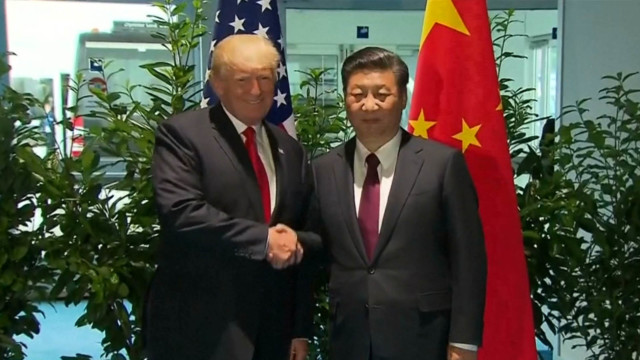The first formal economic talks between China and the U.S. under President Donald Trump take place in Washington this week. The two sides have been talking trade ever since they established diplomatic relations in 1979. But this particular format was formalized nearly a quarter century later—in 2006. So what have they achieved since then?
CGTN’s Owen Fairclough has more.
Laying the foundations for a regular conversation—former Chinese President Jiang Zemin meets his U.S. counterpart George W. Bush for the first time. Five years later the two sides held their first Strategic Economic Dialogue. it was all about things like “…increased domestic consumption and exchange rate flexibility,” said then-Treasury Secretary Hank Paulson in 2006.
Under Barack Obama, the dialogue became Strategic AND economic – recognizing that in addition to trade, the world’s two biggest economies needed to address terrorism, climate change and nuclear weapons.
“The relationship between the United States and China will shape the 21st century, which makes it as important as any bilateral relationship in the world,” said Obama in 2009.
Now Chinese President Xi Jinping is saying, “We are beginning to develop a good personal friendship,” a feeling seconded by U.S. President Donald Trump. “The relationship developed by President Xi and myself, I think is outstanding,” Trump said last spring. They’re continuing this conversation under the Comprehensive Economic Dialogue.
Before this, Xi’s first summit with Trump produced a 100-day deadline to resolve a list of contentious topics, ranging from a resumption of trade in banned food imports and exports…and giving U.S. credit card companies more access to the Chinese market. What other benefits have more than a decade of talks achieved?
One agreement led to huge growth in the number of non-stop airline services between China and the U.S. Back in 2006, just under three million passengers from China flew to the U.S. At the end of last year there were 7.5 million. But some say the Xi-Trump relationship has cooled over the Korean peninsula crisis. And there are continued flash points over subsidies in key trade sectors such as steel. Both sides complain about flooding their respective markets with cheaper products—a practice known as dumping.
“I am not optimistic that we will make headway over issues like the bilateral trade deficit very quickly,” said Bonnie Glaser, China Power Project Director at the Center for Strategic and International Studies. “But over the course of a president’s four-year, or even eight-year term, it is possible that the dynamic can change and that the Chinese can be convinced to take steps, particularly to open up sectors in their economy that have been closed to foreign businessmen.”
While tensions are likely to persist, this dialogue has nevertheless continued across two Chinese and three U.S. presidencies—a tacit recognition that these two countries ultimately need each other.
 CGTN America
CGTN America

